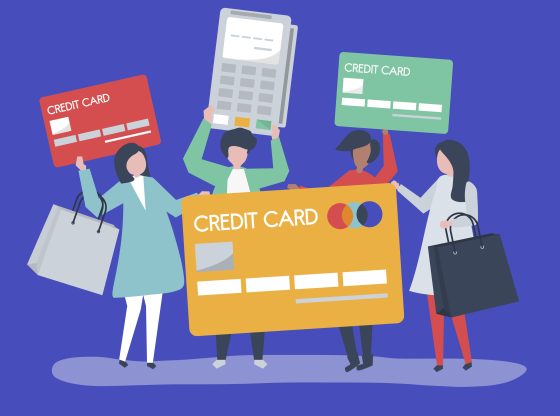In today’s competitive financial landscape, credit cards have become more than just a payment tool—they are a way to earn rewards, save money, and improve financial flexibility. Among the various credit card options, cashback credit cards are highly popular for consumers looking to receive direct rewards on everyday spending.
This guide explores the best credit cards for cashback, their features, and strategies to maximize your rewards in 2025.
What Is a Cashback Credit Card?
A cashback credit card is a card that allows you to earn a percentage of cash back on your purchases. The cashback percentage can range from 1% to 5% or more, depending on the card type and purchase category. Unlike points or miles, cashback is straightforward: you earn a tangible reward that can typically be redeemed as:
- Statement credits to reduce your balance
- Direct deposit into your bank account
- Gift cards or merchandise
The simplicity of cashback rewards makes them appealing for both casual and experienced cardholders.
Why Choose a Cashback Credit Card?
Cashback cards are designed for users who want immediate, tangible rewards. The main advantages include:
- Simple Rewards Structure – Earn a clear percentage back on purchases.
- Flexible Redemption – Redeem cash anytime without complicated conversions.
- Category Bonuses – Higher rewards on common spending areas like groceries, gas, and dining.
- Introductory Offers – Many cards provide lucrative signup bonuses during the first few months.
- Financial Control – Encourages responsible spending to maximize returns without unnecessary debt.
Key Features to Consider
When choosing the best cashback credit card, focus on features that align with your spending habits and financial goals.
1. Cashback Rate
Select a card with high cashback rates in categories where you spend the most. Some cards offer 5% cashback on specific categories, while others provide a flat 1.5%–2% on all purchases.
2. Annual Fees
Cashback cards can be fee-free or charge annual fees ranging from $95 to $550. Premium cards often provide higher rewards or exclusive perks to justify the cost.
3. Signup Bonuses
Many cards offer significant cashback bonuses if you spend a certain amount within the first few months. These bonuses can substantially boost your overall rewards.
4. Redemption Flexibility
Check whether cashback can be redeemed easily—through statement credit, direct deposit, or gift cards—without restrictions or minimum thresholds.
5. Introductory APR
If you occasionally carry a balance, consider a card with 0% introductory APR on purchases or balance transfers. This feature can save money while allowing you to earn cashback.
Best Cashback Credit Cards for 2025
Here are some of the top cashback credit cards that cater to different user needs:
1. Everyday Shopper Card
- Cashback Rate: 5% on groceries, 2% on gas, 1% on other purchases
- Annual Fee: $0
- Benefits: No rotating categories, automatic rewards, and simple redemption
2. Premium Cashback Card
- Cashback Rate: 5% on online shopping, 3% on dining, 1.5% on all other purchases
- Annual Fee: $95
- Benefits: High signup bonus, travel insurance, and purchase protection
3. Flat Rate Cashback Card
- Cashback Rate: 2% on all purchases
- Annual Fee: $0
- Benefits: Unlimited cashback, no category management, and straightforward earning
4. Rotating Category Card
- Cashback Rate: 5% on quarterly rotating categories such as gas or restaurants, 1% elsewhere
- Annual Fee: $0
- Benefits: Seasonal rewards, higher returns on activated categories, flexible redemption
5. Premium Rewards Plus Card
- Cashback Rate: 3% on dining and entertainment, 2% on travel, 1% on other purchases
- Annual Fee: $150
- Benefits: Concierge services, luxury perks, and higher rewards on premium spending
How to Maximize Cashback Rewards
Maximizing cashback requires a strategic approach:
- Use the Right Card for Each Category – Optimize rewards by using high-cashback cards for the relevant spending category.
- Leverage Signup Bonuses – Ensure you meet spending requirements within the first few months to claim the bonus.
- Pay Balances in Full – Avoid interest charges, which can outweigh cashback rewards.
- Track Rotating Categories – Activate and plan purchases around seasonal categories to maximize returns.
- Combine Promotions – Stack card rewards with merchant offers or coupon discounts for extra savings.
Frequently Asked Questions (FAQs)
Q1: Can I have multiple cashback credit cards?
Yes, many users carry more than one card to maximize rewards across different spending categories.
Q2: Are cashback rewards taxable?
Generally, cashback from regular purchases is not taxable. Bonuses earned without spending may be subject to taxes.
Q3: Should I use a cashback card if I carry a balance?
It’s not recommended. High-interest charges can negate the value of earned cashback.
Q4: How often can I redeem cashback?
Redemption frequency varies by issuer but can be monthly, quarterly, or instantly, depending on the card.
Q5: Are there limits on cashback earnings?
Some cards have caps on high-rate categories, while flat-rate cards usually have no limits.
Conclusion
Cashback credit cards are one of the most straightforward and rewarding financial tools available in 2025. They allow you to earn tangible rewards on everyday spending while maintaining financial flexibility.
By analyzing your spending habits, understanding the features of each card, and strategically using multiple cards if necessary, you can maximize your cashback rewards and save money effortlessly.
Choosing the right cashback card today can turn your everyday purchases into real, meaningful financial gains.
